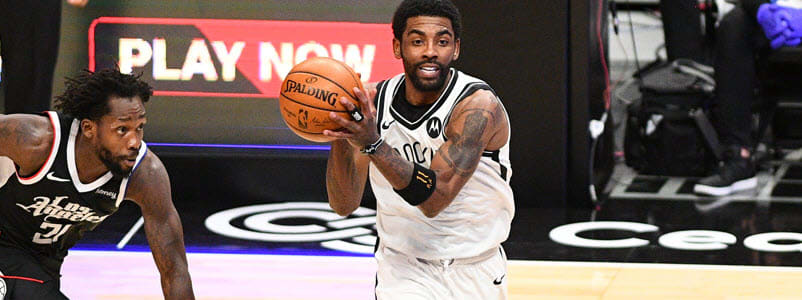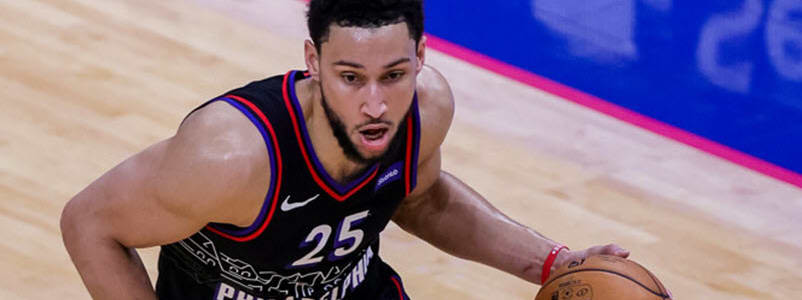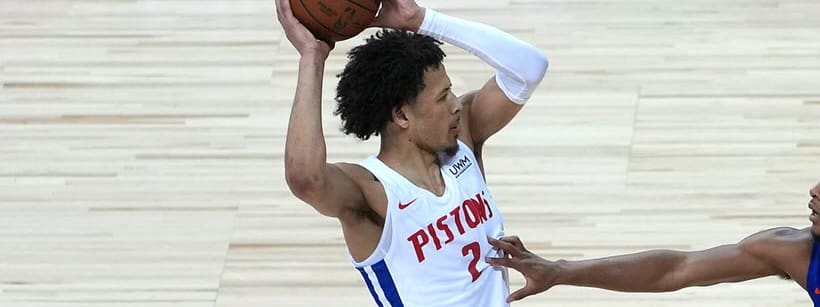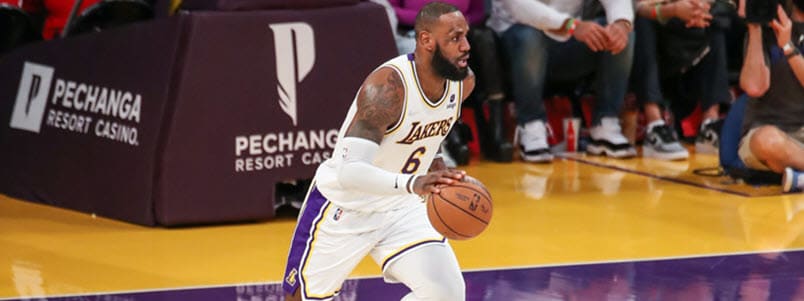Recent RotoWire Articles Featuring Enes Freedom
See More
Kanter often came off the bench for Boston last season, but he was efficient with his opportunities, averaging 8.1 points and 7.4 boards across 16.9 minutes per contest in his lone season with the C's. After the Celtics acquired Tristan Thompson, Kanter was traded to Portland in the offseason and he'll be back with the team that he found success with in 2018-19. In 23 contests with the Blazers in his last stint, Kanter averaged 13.1 points and 8.6 boards across 22.3 minutes, and he'll have a chance to replicate that production. Kanter will play behind Jusuf Nurkic but could enjoy some run off the bench similar to 2018-19 when he did the same. Kanter offers plenty of upside if Nurkic is forced to miss time for any reason, though he's got standalone value if he can log minutes in the low-20's.
Which Enes Kanter will show up in Boston? Will the Celtics see the Kanter that OKC deemed unplayable in the playoffs due to his defensive limitations? Or will they enjoy the Kanter that played 29 clutch minutes per game in the playoffs for Portland, averaging 11.4 points, 9.6 boards, 0.7 steals and a mildly serviceable 0.6 block? In good conscience, we are unable to ponder Kanter's time with the dumpster-fire Knicks. All indications point towards the 27-year old veteran behaving more like the Portland Trail Blazer we saw last year. With Al Horford packing his bags for Philadelphia, Kanter now stands as the lone starting center in option in Boston, with the opportunity to continue posting double-doubles to the delight of many bargain-hunting fantasy fans. There are even off-season whispers of Kanter improving his three-point shooting under coach Brad Stevens' tutelage (see Baynes, Aron). Kanter will certainly never remind the Garden faithful of the legendary Bill Russell, but his strong inside scoring moves and greedy rebounding should satisfy many a fantasy owner.
After two years in Oklahoma City, Kanter was traded to the Knicks last offseason in a deal that also sent Carmelo Anthony back to the Thunder. It was a fruitful landing spot for the big man, as he wound up starting all 71 games he played in after being stuck behind Steven Adams previously. His 25.8 minutes per game was a three-year high and he ultimately averaged a double-double for the first time in his career, posting 14.1 points and 11.0 rebounds. However, that's where the production stopped, as Kanter's offense-first mindset kept him well off the radar in the other categories. While it took him a while to a make a final decision, Kanter eventually opted into his $18.6 million player option for the upcoming campaign, which isn't surprising considering he was unlikely to land anywhere near that sort of money elsewhere. He'll slot back into the starting center role right away and should see just as big of a workload to start the year, if not a few extra minutes, considering Kristaps Porzingis will miss at least the first two or three months of the season while recovering from a torn ACL. Look for Kanter to operate as the team's second scoring option behind Tim Hardaway for the duration of Porzingis' absence and he should also continue to be a solid source of boards, though it may be tough for him to match the 11.0 he averaged a season ago. Kanter doesn't have any semblance of a three-point shot, but he does have valuable percentages after finishing with a 59.2 percent clip from the field and an 84.8 percent clip from the free-throw line. Kanter won't provide much defense, but his work elsewhere should bring him into consideration as an intriguing mid-round pick.
Kanter will be entering his third full season with the Thunder with about the exact same role he’s had all along: offensive-minded backup. Despite the trading away of Domantas Sabonis, who started 66 games last season ahead of Kanter, the newly-acquired Patrick Patterson is in line to essentially take the role of Sabonis, keeping Kanter refined to a limited role off the bench. The 25-year-old still managed to hold value despite the bench role, though, most notably averaging 14.3 points on 54.5 percent shooting from the field with 6.7 rebounds on just 21.3 minutes per game, making him one of the most efficient scorers in the league and valuable across almost every format. It would be hard to imagine him remaining as efficient for another straight year, but even a slight digression in scoring efficiency doesn’t pose a threat to his wide-spread value.
After joining the Thunder via trade in February 2015 and producing 18.7 points and 11.0 rebounds per game in 24 appearances, Kanter re-signed with the club on a four-year, $70 million contract that summer. While that kind of money would normally warrant a starting gig, the returns of Kevin Durant and Serge Ibaka from injury and their subsequent good health resulted in Kanter making just one start in his 82 games in 2015-16. He also saw his court time fall to 21 minutes per game, 10 fewer than what he’d averaged with Oklahoma City the year before. If Kanter was frustrated by the declining role, it wasn’t apparent in his numbers, as he responded by putting up 12.7 points and 8.1 rebounds per contest and recording 24 double-doubles, the most from any NBA reserve in a single season since 1992-93. The impressive board totals often masked the fact that Kanter remains a poor individual defender who doesn’t block many shots and lacks the lateral mobility to effectively match up against the small-ball lineups favored by many teams across the league, making him a better fantasy player than a real-life one. Those defensive shortcomings may forever stand in the way of Kanter consistently receiving the time he’d need to submit eye-popping stat lines like the 33-point, 20-rebound line he logged against the Trail Blazers in his lone start of 2015-16. It does help Kanter’s cause that Ibaka (Magic) and Durant (Warriors) are now with new teams, but it’s still uncertain to translate back into a regular 30-minute role, since the Thunder continue to fancy themselves as playoff contenders. With that in mind, Ersan Ilyasova, Joffrey Lauvergne and Domantas Sabonis could conceivably end up dominating the minutes at power forward next to defensive anchor Steven Adams, who hasn’t appeared comfortable sharing the court with the space-clogging Kanter for long stretches. Such a development would probably take a full-on breakout season off the table for Kanter, but even only a mild boost in court time could have a dramatic positive effect on his fantasy value thanks to his robust per-minute numbers. He makes for a good gamble in the middle rounds of fantasy drafts.
After spending his first three and a half seasons with the Jazz, Kanter was traded to the Thunder at the trade deadline last February. With incumbent starting center Steven Adams out with a broken hand at the time of the trade, Kanter was thrust into the starting lineup in his first game with the Thunder and never relinquished it, posting career-high averages of 18.7 points, 11.0 rebounds, 1.1 assists, 0.5 blocks, and 0.5 steals in 31 minutes per game through 26 contests. Kanter excelled with the Thunder, shooting 57 percent from the field and 78 percent from the line, turning around what was looking like another disappointing season. At 6-foot-11 and 247 pounds, Kanter is nimble enough to play power forward, but his only real position in the NBA today is center. Oklahoma City already has two scoring phenoms in Russell Westbrook and Kevin Durant, so with both players healthy this season, there probably won't be another 18.7 points available every night for Kanter. Despite the fact that the Thunder matched the offer sheet Kanter signed witht the Trail Blazers, there's legitmiate concern that Kanter's defensive deficiencies could have him sitting on the bench more than he did last season on an injury-depleted Thunder squad. Kanter also underwent a minor arthroscopic knee procedure in April that was supposed to sideline him for four-to-six weeks, but considering that the team matched his offer sheet of four-years and $70 million, there's little reason to be concerned with the knee. He's had a whale's age to recover at this point. Kanter's scoring may not be there this season, but if he gets enough minutes, he should rebound well and be a great boon in the percentages categories for rotisserie leagues. Expect Kanter to have greater value in rotisserie leagues than he does in head-to-head leagues this season.
Enes Kanter is entering his fourth season in the NBA after a disappointing 2013-14 season. By all statistical measures, it was the best season of Kanter's career (12.3 points, 7.5 rebounds, 0.9 assists, 0.4 steals, 0.5 blocks in 27 minutes per game), but he was demoted to the bench midway through the season after beginning the year as a starter. However, new head coach Quin Snyder plans to move him back into the starting power forward slot this upcoming season. Kanter will play alongside Derrick Favors in the frontcourt. When given enough time on the court, the 22-year-old has proven to be a double-double threat, which was exemplified by the fact that he reached that benchmark 24 times last season. Despite remaining relatively healthy throughout his third year in the league, Kanter has been dealing with a knee injury in the offseason that caused him to pull out of the FIBA World Cup for Team Turkey. He's had the entire summer to rest and seems poised for a redemptive 2014-15 season.
Through his first two seasons at the NBA level, Kanter has had to bide his time while backing up veteran big men Al Jefferson and Paul Millsap in Utah. Both Jefferson and Millsap left the Jazz via free agency this summer, opening the door for Kanter to live up to the potential he has flashed during his brief stints of extended run. The 21-year-old center averaged 7.2 points, 4.3 rebounds and 0.5 blocks last season, but he did that damage in just 15 minutes per game. At 6-11, 260, Kanter is a mountain in the middle. His athleticism is somewhat average for a center, but he's physically imposing with solid post moves and a nice touch around the rim. He also has the ability to hit face-up jumpers and shot well from the free-throw line (79.5 percent) in his sophomore campaign. The minutes will be there for Kanter this season, so if his averages in his two starts last season (20 points, 15 rebounds) or his career per-36 minute averages (14.9 points, 10.7 rebounds) are any indication, we could be looking at one of the bigger breakout stories of the year. The only hurdle for Kanter is his recovery from shoulder surgery, but early indication is he'll be ready to take the court when training camp opens.
Kanter is the only player on the Jazz roster that is close to seven feet tall. He played in all 66 regular season games last year and showed some promise of being a good inside player in his rookie season. He averaged 4.6 points and 4.2 rebounds in 13.2 minutes, and also shoot 49.6 percent from the field. 2012-13 should be another year of learning and adapting for Kanter, but we could see some decent numbers from him at times.
The Utah Jazz selected the Turkish basketball player with third pick in the 2011 draft. He has a lot of potential – he reminds most NBA analysts of another foreign center, Marc Gasol.













